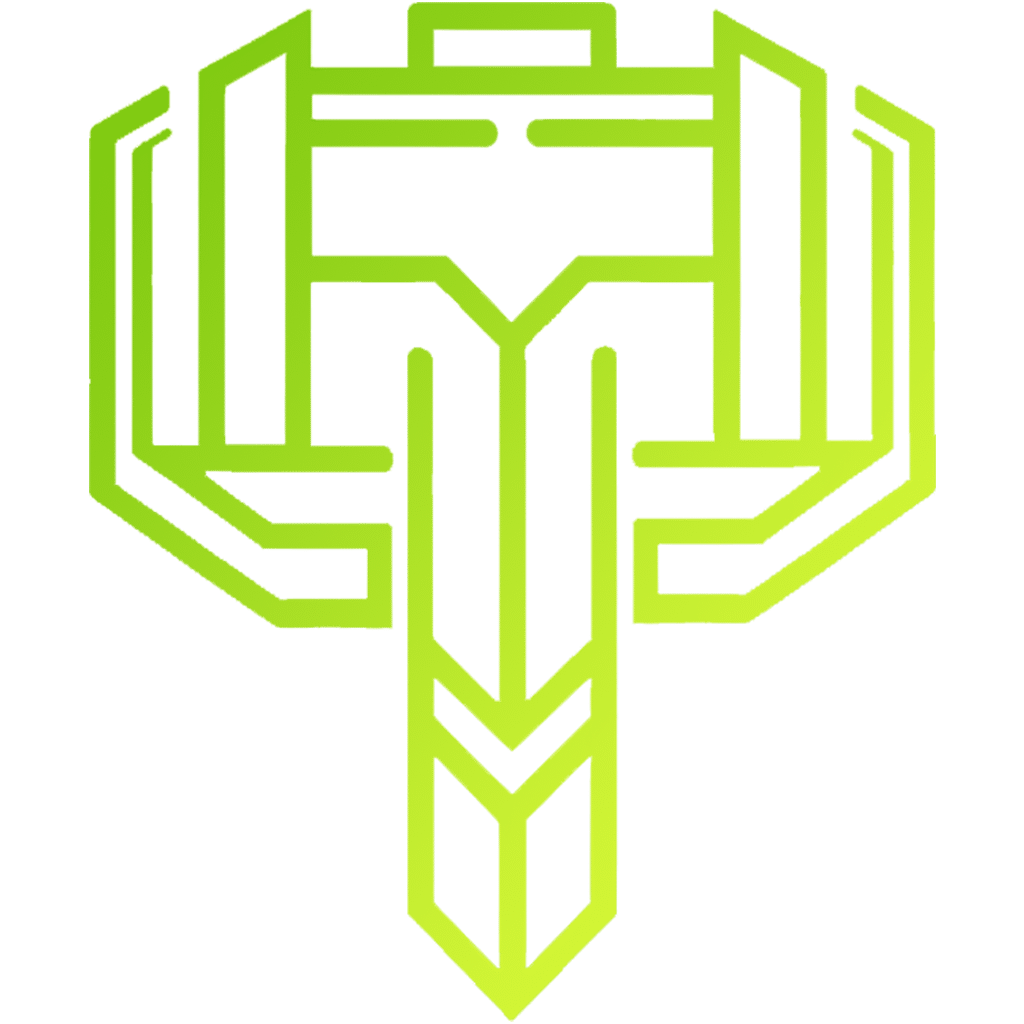In order to increase the reach and shareability of this particularly timely / crucial white paper, we’ve made it available in .PDF format.
Summary
The Threat
The single-most important takeaway regarding the Omicron variant of COVID-19 is its high rate of infection. As differentiated from the Delta variant and prior forms of COVID, the Omicron variant has arrived with swifter increases in case counts. The CDC has attributed this to: 1) higher rates of transmissibility of the virus variant itself; and 2) the variant’s evasion of immunity from prior COVID infection and/or vaccination.
Early data suggests that illness from the Omicron variant of COVID-19 may generally be less severe than that from the Delta variant or prior forms of COVID. This information, which has been widely disseminated, may inform a less risk-averse perspective in individual decision making with respect to the current COVID threat landscape. Nevertheless, any COVID-related infection of personnel, regardless of severity, requires active response, risk mitigation, management and communication.
The Omicron variant will pose a greater than expected threat to businesses at the start of 2022, brought on by its high rate of infection, potentially unmitigated by prior vaccination efforts and immunity generated by prior infection, and furthermore fueled by increased spread due to holiday travel, gatherings, and other behavioral factors.
Active Risk Management: Key Approaches for Business
The threat of the Omicron variant demands action on the part of business leaders and management teams. What follows is a select list of key considerations for businesses in response to the emerging and dynamic set of risks imposed by the Omicron variant.
Step 1: Key Dependency Mapping
In-Office Functions: Critical Workstreams Requiring Physical Presence
For many companies, certain critical functions can only be performed physically in company offices. From checking mail and parcel deliveries to performing tasks requiring the use of non-portable equipment, it is essential that businesses have a full understanding of their core office presence requirements.
Non-Resilient Functions: Persons Having Sole Competence In Key Tasks
Particularly in startups and emerging companies, it is common for certain key business tasks to be the sole domain of a single individual. It is essential for businesses to have an up-to-date list of all key tasks for which the business is dependent on one employee. When forming / updating such a list, it is wise for businesses to take adjacency into account, viz. understanding which other employee is best suited to perform each identified task.
Insight
Mapping exercises are best conducted using a two-step process:
- Management-level top-down structuring; then
- Unit-level bottom-up detailing.
Engagement of personnel at all levels of an organization’s chain of command in each business vertical is essential in gathering a complete picture of dependencies within the organization. In most cases, dependencies exist at the lowest level of function, far outside the knowledge and oversight of management stakeholders.
Step 2: Company Policy Updates
In order to best protect against the threats posed by the Omicron variant, companies should strongly consider adjusting internal policies and procedures. These adjustments must, of course, be specific to the unique nature of every company’s individual business requirements, abilities, opportunities, workforce composition, geographic footprint, industry segment, and a variety of other factors. These adjustments, likewise, should be made on a temporary basis, the duration of which should correspond with the best available information on the ongoing nature and risk level of the Omicron variant threat. The following represents a set of policy positions designed to reduce—to the greatest extent possible—risk posed by the Omicron variant to ongoing business operations:
- Shift to a near-term “Work From Home” (“WFH”) model to the greatest extent possible.
- Business units with critical responsibilities requiring an in-office presence should adopt a rotational schedule with only the minimum number of personnel required working from company offices at any time. Each unit should target a goal of one employee per office location per day.
- Key in-office tasks should be consolidated to daily lists for each in-office day. The staff members of each business unit having key in-office tasks should be cross-trained to perform tasks below, at and above their typical scope of duties. This represents an opportunity for junior personnel to gain experience and visibility into the roles and responsibilities of more senior staff, while likewise representing an opportunity for more senior staff members to demonstrate core leadership skills by “flexing downwards” into tasks usually beneath their role / level.
- In certain situations, it may be wise to cross-train staff members of related or “adjacent” business units to perform such critical in-office functions of the other unit or units, yielding further opportunities to limit the number of in-office staff required to cover all critical in-office functions.
- All personnel having sole competence in key tasks / business functions should, with their managers, create procedure documents and training materials (to the extent necessary) in order to create business unit resiliency in such areas.
- Institute key in-office safety protocols (with emphasis on legally required measures pursuant to relevant laws, rules, ordinances, etc.). Such measures should include mandatory use of masks when in-office, limiting personnel gathering in small spaces (e.g., elevator capacity limits, where feasible), closure of gathering spaces (e.g., staff lounges), sanitization of workspaces, and other key infection prevention measures.
- Suspend all business travel not strictly necessary for the continuity of business.
- Institute mandatory out-of-office periods following any travel by in-office personnel, with a requirement of a negative COVID screening prior to office re-entry.
- Create protocols and procedures for personnel to report both exposure and/or a positive COVID test result. It is critical that such procedures maintain the privacy of the personnel involved and limit access of identifying information to the greatest extent possible, and, in any event, in compliance with relevant laws / rules / regulations around the privacy of healthcare information.
- Create protocols and procedures for the external reporting of COVID exposure information to necessary third-parties as required by law, rule, regulation, contract or best practices (e.g., reporting to landlord / property management company re: in-office exposure). Staff members given responsibility under such protocols / procedures should be trained in order to provide necessary information while preserving business / personnel privacy as required.
- Assign roles and responsibilities to certain staff members to maintain the organization’s situational awareness of the ongoing Omicron variant threat. Responsibilities should include the intake, parsing and upstreaming of key threat-related information, developments in infection countermeasures, changes to relevant laws / rules / regulations / ordinances governing the organization’s conduct / COVID response, and other related information useful to managing COVID and Omicron-related risks.
Insight
Company messaging and employee training are essential to the success of any policy or procedure. Businesses must ensure that all personnel are aware of and have been given training in all new policies and procedures.
Step 3: Proactive Considerations
Protection: Masks, Sanitizers & Other Protective Equipment
With supply chain concerns presenting an ongoing concern as 2022 begins, companies should consider maintaining adequate stocks of key protective equipment such as masks, sanitizers, and other items of PPE relevant to their business needs.
Diagnostics: In-Home & Medical Testing Resources
COVID testing continues to present challenges for individuals and businesses in many locations nationwide within the US and worldwide. Businesses may consider providing employees with testing solutions in order to ensure access and minimize business disruptions.
Technology: Resources For Remote Collaboration
The need for seamless remote-work collaboration has been present since the dawn of the COVID-19 pandemic. However, with the onset of the Omicron variant, the ongoing nature of this need has been made clear. Companies should ensure that business units and employees are properly resourced to maintain productivity in what may be an extended remote-work scenario.
Information: Vetted Sources Of Risk Intelligence
Business decision making is only as effective as the timeliness and accuracy of the information on which it is based. Business leaders and management teams must ensure that critical information from reliable sources is readily accessible.
Protection: Respirator & Mask Types; Use Cases
The latest threat intelligence, at the time of this writing, suggests that cloth masks alone will be insufficient to adequately protect against the spread of the Omicron variant of COVID-19 due to its heightened transmissibility and observed increased rate of infection.3 4 The following reflects current guidance from medical / infection prevention authorities on best practices for use of respirators / masks in non-medical settings:
N95 Respirator
- Certified by US National Institute for Occupational Safety & Health (NIOSH).
- Bears certification markings re: NIOSH certification as N95.
- Features nose-bridge clip and head-loops (not ear-loops).
- Forms tight-fitting seal around wearer’s face.
- Provides adequate protection in high risk / crowded environments.
KN95 Respirator
- Certified under Chinese standard GB2626:2006.
- Bears certification markings re: KN95 certification. May also bear CE (EU standard) markings.
- Features nose-bridge clip and ear-loops.
- Forms tight-fitting seal around wearer’s face.
- Level of protection may vary (high risk of counterfeit / potential quality control issues).
Cloth + Surgical Mask
- Surgical or other disposable mask to be worn inside of cloth mask.
- Surgical or disposable mask should be made of multiple layers of non-woven material.
- Surgical or disposable mask should feature nose bridge clip.
- Combined masks should fit snugly, with no gaps and covering nose and mouth.
- Increased level of protection vs. cloth only; recommended if no certified respirator available.
Cloth Mask Only
- Not certified for protection against COVID-19.
- Should be made of multiple layers of breathable fabric and should allow visible light through.
- Should feature nose bridge clip and fit snugly, with no gaps, covering nose and mouth.
- Lowest level of protection of listed options.
- Should not be worn in high risk / crowed environments.
Key Considerations For Identifying Counterfeit Respirators
N95 Respirators
The CDC has become aware that counterfeit N95 respirators are being sold in the US through various channels. It is vital, when purchasing N95 respirators, to ensure that such respirators are genuine. Genuine N95 respirators will typically bear the following markings / characteristics:
- NIOSH (properly spelled) name in block print or NIOSH logo.
- Approval number, beginning with “TC” and formatted “TC-###-####” (TC + 7 digits total).
- Brand name / make and model number of respirator.
- Filter class and efficiency level of respirator (e.g., “N95” for filter class “N” and 95% efficiency level).
- Does not appear on CDC list of counterfeit respirators.10
- Utilizes head loops; does not utilize ear loops.
- Does not bear any beading, sequins or other decorative embellishments.
- Does does not make any representations regarding use for children.
KN95 Respirators
Chinese customs authorities have become aware that counterfeit KN95 respirators are being exported from China and sold in international markets. While it is more difficult to ascertain whether KN95 respirators are genuine or counterfeit, genuine KN95s will typically bear the following markings / characteristics:
- Packaging must read “not a medical device,” “not for medical use” or similar.
- Must be in retail-quantity packaging and may not be in bulk packaging.
- Must not contain FDA logo anywhere, neither on packaging nor on respirator itself.
- May bear “CE” marking (EU conformity) accompanied by “EN149-2001 + A1: 2009” (technical standard).
- May bear “KN95” marking (Chinese standard) accompanied by “GB2626-2006” (technical standard).
- Must be accompanied by product certificate detailing name of product, name of manufacturer, technical standard, batch number, production date, warranty date and model specifications.
- Does not appear on CDC list of counterfeit respirators.
Diagnostics: In-Home & Medical Testing Resources
The increased likelihood of Omicron-related infections is expected to yield heightened near-term demand for COVID diagnostics. To promote employee health, ensure workplace safety and minimize business disruptions, employers should strongly consider deploying resources towards easing / facilitating access to critical testing and medical care resources for their employees.
- The current availability of testing resources vs. demand is swiftly approaching crisis levels. Reliance on public health options for diagnostics may subject employees and employers to potentially avoidable delays and disruptions.
- As applicable, businesses should engage their health insurance providers in discussions around what diagnostic and care options exist under the business’s existing coverage, and communicate internally to all employees specifically regarding the resources available to them under current company policies.
- Several diagnostics companies offer scaled COVID testing solutions for businesses of various sizes and scopes. Businesses should consider conducting market due diligence on solutions providers and evaluating the costs and benefits of purchasing a COVID diagnostics solution for employees.
- Businesses may also wish to consider engaging directly with suppliers for bulk purchases of at-home COVID tests for availability to employees, as supply shocks and other supply chain issues may hamper individual access to at-home test kits.
Insight
The surge in COVID cases related to the Omicron variant poses threats not only to employees’ physical health, but mental health as well. With reentry into stricter social and lifestyle restrictions (e.g., quarantine protocols, travel bans, etc.) looming large, it is vital that employers ensure that employees are taken care of in all facets of health. Positive company messaging is a key starting point. Companies should also engage with their health insurance providers and related resources to assess and potentially augment mental health options for employees (e.g., mental health appointments, EAP services, etc.). Finally, employers should engage employees in discussion around their concerns and take appropriate / viable steps to maintain positive company culture. Employers may choose supplement the aforementioned with enterprise solutions from the wide and ever-broadening marketplace of apps, programs, courses, and other service offerings focused on maintaining /improving individual mental health.
Technology: Resources For Remote Collaboration
Since the dawn of the COVID-19 pandemic, most, if not all, businesses have had to implement some form of “work-from-home” or remote collaboration processes. However, while these measures may have been viewed as merely a stopgap for a temporary period of disruption, the onset of the Omicron variant warrants a review of such processes, together with the technological solutions underpinning them, with a eye to long-term / more permanent use.
- The first and most critical step in technological resource planning is user engagement. With some level of solutions likely already in place, businesses should conduct end-user surveys across business units to gain an informed perspective on what works vs. what doesn’t.
- Technology-based solutions should focus on three key facets: a) remote meeting tools; b) project management and collaboration utilities; and c) remote onboarding and staff training functionality.
- The paradigmatic value in choosing technological solutions should be ease of use by end users. With employees having to learn a “new way to work,” the best and most effective solutions will be ones which employees face no issues with implementing.
- IT resources should be made available to end user employees on a real-time basis to ensure proper rollout. Employees should be encouraged to reach out to IT resources at the moment they encounter issues in order to prioritize enterprise-wide solutions over in-the-moment (and often problematic) workarounds. Rigorous end-user testing / piloting prior to purchase is preferable, if timelines allow.
- Prolonged remote work scenarios often yield heightened employee fatigue and “burnout” due to an overload of e-mail, chat, virtual meeting and other communications. Over-frequent communication can be pre-empted by proper and rigorous use of project management and collaboration resources such as working dashboards, issues logs, and other technology-based resources. Ensuring that use of such systems becomes a “sticky” experience and “first thought” approach for end users is key, and will, in many instances, require significant employee training, with specific emphasis on training for managers.
Insight
Involving end-user stakeholders in a solutions diligence / RFP process is a highly value-additive approach to properly resourcing a business for productive remote work. Management, in partnership with IT leaders, should deploy employee engagement exercises such as surveys, town hall meetings, breakout meetings, Q&A hours and similar forms of user engagement to gain a broad-based understanding of the scope and details of pain points, challenges and opportunities with respect to IT systems and resources. Management should then charge IT leaders with the mandate of compiling such data into key desired value propositions with a corresponding assessment rubric for use in a market due diligence / RFP process to evaluate proposed solutions and service offerings by third party vendors. Where possible, end-user testing and pilot programs may offer substantial supplemental value in the evaluation process.
Information: Vetted Sources Of Risk Intelligence
As the threat posed by the Omicron variant of COVID-19 continues to shift and manifest in new forms, it will be vital for business leadership and management teams to stay informed on current developments in as close to real-time as possible. While this resource presents a crucial starting point, key information and corresponding risk management strategies and tactics will change as this threat evolves. Businesses must avail themselves of available risk intelligence and planning resources on as early a basis as possible.
- The ecosystem of laws, rules, regulations and ordinances from a federal, state and local perspective will be different for every business. It will be necessary for companies to connect with key external resources mapped to the specific jurisdictional geographies governing their respective business footprints.
- At the time of this writing, in the United States, there exists a lack of clarity regarding the intersection of federal versus state and local mandates regarding COVID-related risk management protocols and requirements. It is recommended that business leaders connect with relevant legal resources in order to best understand and plan for possible outcomes and compliance requirements.
- As potential compliance changes and updated requirements will affect employees directly, it is critical that business leaders engage their HR leadership in order to gain insight into how potential new mandates may affect workforce availability, employee sentiment and overall company culture. Proactive risk management and internal communication to employees will prove vital to positive outcomes.
- Businesses may also wish to consider engaging non-legal consulting resources to assist with risk management planning and solutions deployment.
Step 4: Key Resources
Official Communications & Authoritative Information
The following represents a selection of regularly updated key sources of Omicron risk information which may be consulted for further / ongoing threat assessment:
- CDC Omicron Variant – https://www.cdc.gov/coronavirus/2019-ncov/variants/omicron-variant.html
- CDC Workplaces and Businesses – https://www.cdc.gov/coronavirus/2019- ncov/community/workplaces-businesses/index.html
- CDC Travel – https://www.cdc.gov/coronavirus/2019-ncov/travelers/index.html
- US State Department Travel Advisories – https://travel.state.gov/content/travel/en/traveladvisories/traveladvisories.html/
- CDC Counterfeit Masks & Respirators – https://www.cdc.gov/niosh/npptl/usernotices/counterfeitResp.html
- US Department of Labor Coronavirus Resources – https://www.dol.gov/coronavirus
- OSHA Coronavirus Resources – https://www.osha.gov/coronavirus
- Vaccines.gov – https://www.vaccines.gov/
- US DOJ Coronavirus Response – https://www.justice.gov/coronavirus
- US EEOC Coronavirus Resources – https://www.eeoc.gov/coronavirus
Titan Grey stands ready to assist on business risk management matters of the nature discussed in this Titan Grey Thought Leadership piece. Please inquire via e-mail to hello@titangrey.com.





